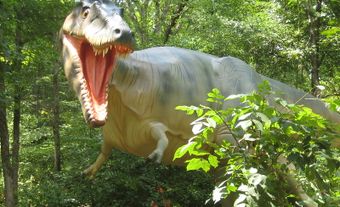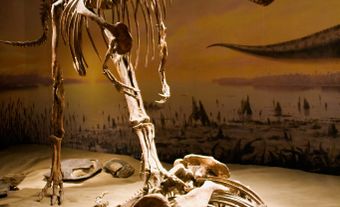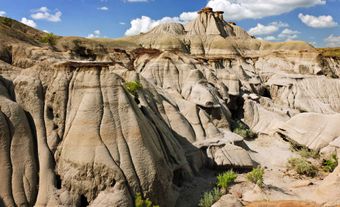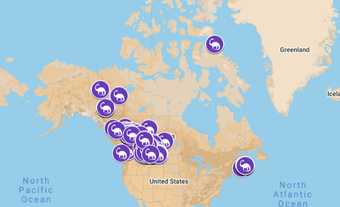Geography and Fossils
Dinosaur Provincial Park encompasses badlands and prairie. The badlands, named because the land is not arable, contain layers of sandstone and mudstone deposited by rivers almost 75 million years ago. Prehistoric rivers carried these sediments to the Western Interior Seaway, which covered the great plains region of North America. Each layer of sediment contains fossil plant and animal species characteristic of the epoch in which they were transported.
The fossilized remains of dinosaurs and other reptiles, amphibians, birds and primitive mammals are abundant, allowing scientists a detailed glimpse into a chapter of Earth’s history. No other area of comparable size has produced such a diverse record of dinosaurs and their contemporaries. Erosion processes following the last Ice Age formed the hoodoos and gullies characteristic of the region. Vegetation is sparse and desert-like (e.g., cactus).
Facilities
Bus tours and hikes are organized in summer and certain areas are restricted. Exhibits at the field station of the Royal Tyrrell Museum of Palaeontology are open year-round.

 Share on Facebook
Share on Facebook Share on X
Share on X Share by Email
Share by Email Share on Google Classroom
Share on Google Classroom



